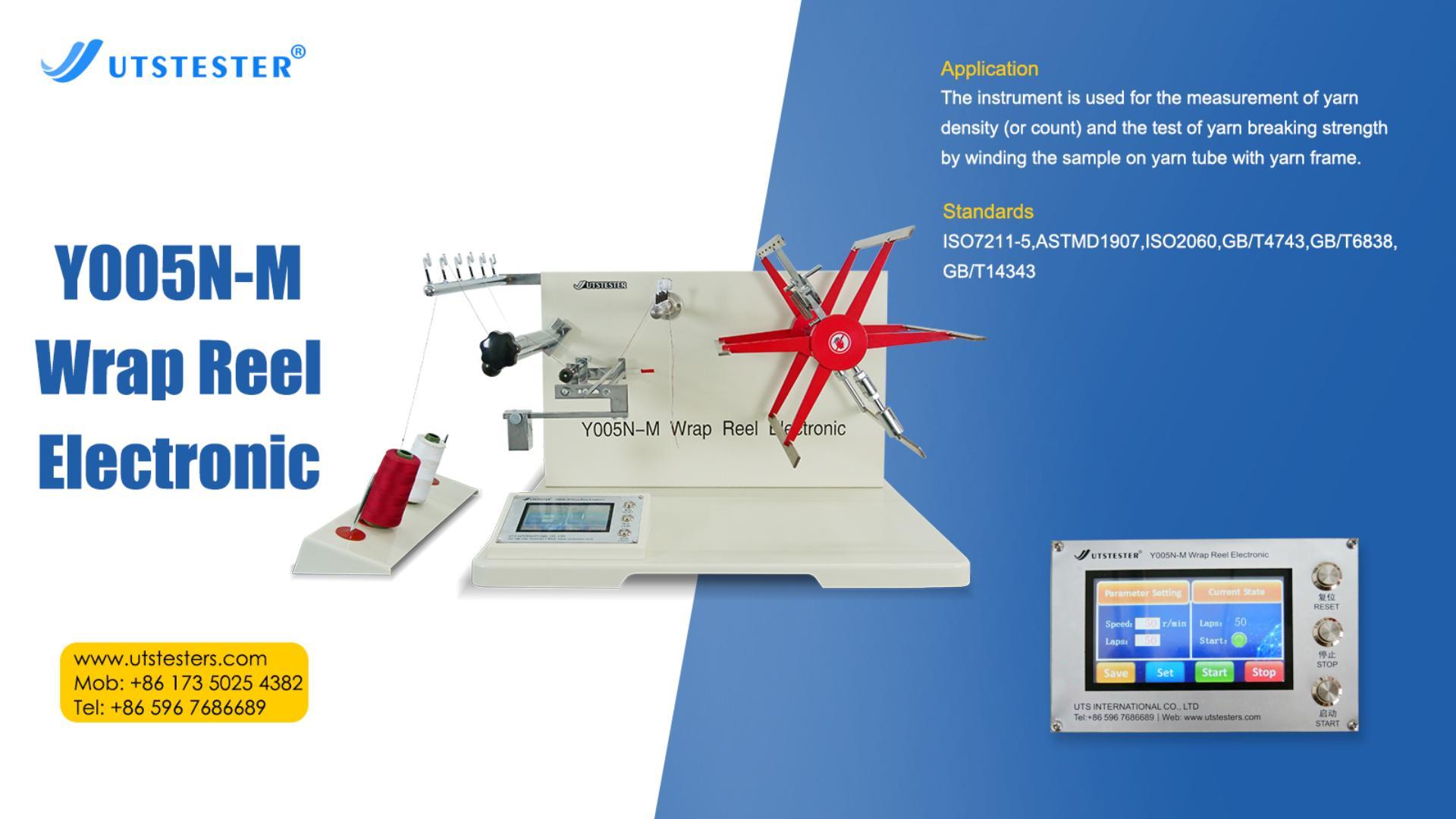 +86 152 6060 5085
+86 152 6060 5085
 +86 152 6060 5085
+86 152 6060 5085
Blog
Catalog
Latest Blog
Yarn length measurement is an important part of quality control in the textile industry, used to measure parameters such as the length, linear density and twist of yarns. The following is the standard usage method of the yarn length measuring instrument:
I. Preparatory Work
1. Instrument inspection
(1) Confirm that the length measuring instrument is placed horizontally and all its components are intact.
(2) Check whether the counter, tensioning device and yarn guiding device are working properly.
(3) Clean the surface of the instrument and the yarn guiding components.
2. Environmental conditions
(1) Standard test environment: Temperature 20±2℃, relative humidity 65±3%.
(2) Avoid direct sunlight and strong air currents.
3. Sample preparation
(1) Take about 1.5 meters of yarn from the yarn barrel as the guide yarn.
(2) Remove the yarn segments with damaged or contaminated surfaces.
Ii. Operating Steps
1. Install the yarn
(1) Draw the yarn out from the bobbin and pass it through the tensioning device.
(2) Ensure that the yarn passes through all yarn guides without any cross-entanglement.
(3) Fix the end of the yarn on the winding shaft.
2. Parameter Settings
(1) Set the appropriate tension according to the type of yarn (usually 0.5cN/tex for cotton yarn and 0.25cN/tex for wool yarn).
(2) Set the winding length (the standard is 100 meters, and for short segment tests, it can be 10 meters or 20 meters).
(3) Set the number of pre-turns (usually 3 to 5 turns).
3. Start measuring
(1) Start the instrument, and the yarn begins to be wound evenly.
(2) Observe the winding process to ensure that the yarns are neatly arranged without overlap.
(3) The instrument will automatically stop when the set length is reached.
4. Data recording
(1) Record the actual length displayed by the counter.
(2) If the linear density is measured by the weighing method, remove the yarn frame for weighing (accurate to 0.01g).
(3) Calculate the actual linear density: Tex= weight (g)×1000/ length (m).
Iii. Precautions
1. Safe operation
Do not touch the moving parts when the instrument is in operation.
(2) Press the emergency stop button immediately in an emergency.
2. Measurement accuracy control
At least three samples should be tested for each batch of yarn and the average value should be taken.
(2) The tension fluctuation should be controlled within ±0.1cN.
(3) The winding speed should not be too fast (30-60m/min is recommended).
3. Maintenance and care
Clean the instrument after daily use.
(2) Regularly check the accuracy of the tension device.
(3) It should be calibrated by professionals every six months.
Iv. Common Problem Handling
1. Yarn breakage
(1) Check if the tension is too high.
(2) Check if there are burrs on the yarn guide.
(3) Confirm whether the strength of the yarn itself meets the standard.
2. Inaccurate counting
(1) Check whether the sensor is clean.
(2) Confirm whether the preset length unit is correct.
(3) Check whether the circuit connection is good.
3. Uneven winding
(1) Adjust the stroke of the yarn guide.
(2) Check whether the tension of the yarn is stable.
(3) Confirm whether the winding shaft is deformed.
The correct use of the yarn length measuring instrument can obtain accurate yarn length data, providing a reliable basis for subsequent quality control and process adjustment. Data should be recorded and archived in a timely manner after each test to facilitate quality tracking and analysis.

Email: hello@utstesters.com
Direct: + 86 152 6060 5085
Tel: +86-596-7686689
Web: www.utstesters.com